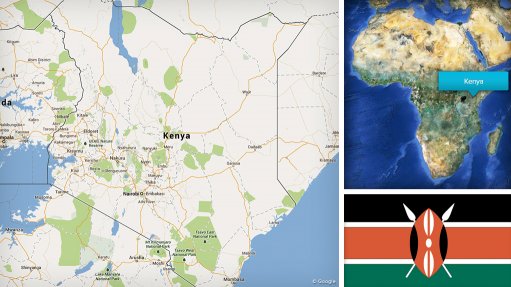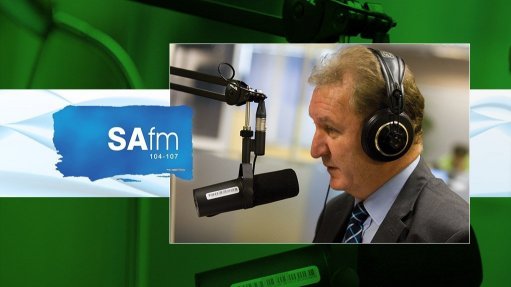Getting African rail on track
This article has been supplied by the author and has not been written or solicited by Creamer Media. It may be available only for a limited time on this website.
By Morne Visagie, Senior Investment Banker at Absa CIB & Nkululeko Kwalo, Coverage Banker at Absa CIB
In 2009, the legendary US investor Warren Buffett made one of the largest investments of his career when he inked a $44bn deal in US rail operator Burlington North Santa Fe Railroad. At the time, many other investors questioned the transaction. However, it has subsequently delivered healthy returns for shareholders. It is this kind of visionary investment and foresight that is needed for the rail sector in Africa.
It is estimated that the South African economy missed out on between R39bn and R50bn in export revenue in 2022 due to inefficient railway systems. This translates to about 1% of the country’s Gross Domestic Product (GDP).
Rail as a percentage of general freight in South Africa is now just under 8% - a massive decline from 26.8% in 1990. Transnet itself has indicated that it will cut its rail network by 20 000km as it seeks to focus on more profitable routes.
In short, the rail industry in South Africa as well as numerous other countries on the continent are in a dire state of disrepair and need innovation as well as visionary investment.
As a bank we are heavily invested in the efficacy of matters related to ESG (Environment, Social and Governance) when we fund infrastructure projects on the continent. It is therefore a tough sell to both our private and public sector stakeholders that an investment in rail has the potential to generate significant economic development and growth over time. Currently, sectors such as energy, resources, and water are all the rage, but we are confident in our pitch to get rail back on track.
What is less clear is how we integrate the various moving parts to help meet the economic and social needs of the presence countries we participate in. Intra-regional trade accounts for just 18% of Africa’s total trade volume. This compares with 50% for North America, 52% for Asia, and 70% for Europe. The African Continental Free Trade Area (AfCFTA) is expected to help drive intra-African trade and make it easier for African countries to do business with each other. However, when you evaluate the state of rail networks across Africa it is evident that they are not well integrated. This creates friction when moving goods and passengers across borders. The rail industry can take a leaf out of the International Air Transport Association’s (IATA) book which has successfully integrated and streamlined transportation activities across numerous countries and jurisdictions.
Another matter that has hampered the smooth movement of goods across regions and countries via rail has been track gauge. Track gauge is the distance between the two rails of a railway track. All transporters on a rail network must have wheelsets that are compatible with the track gauge. Since many different track gauges exist worldwide, gauge differences often present a barrier to wider operation on railway networks. The standardisation of rail gauge has become a primary and key point of discussion.
When looking at “rail” it is important that one is not only focused on the physical rail lines and the carriage infrastructure, but rather on the broader ecosystem and the other infrastructural elements involved to ensure that the system works both efficiently and effectively. This includes elements such as ticketing systems, railway stations, the shuttle or bus infrastructure around the stations and the small business ecosystem that can be supported by the growth and maintenance of rail networks.
This is perfectly captured in the South African passenger rail market. Although the Gautrain is far behind on its ridership targets, it has received significant subsidies in making rail attractive by maintaining aesthetics. At the same time, the Passenger Rail Agency of South Africa (PRASA) – which has the potential to offer mobility for far larger numbers – has suffered from chronic under-investment.
It is clear that rail requires large-scale investment and with many African countries struggling to unlock capital for infrastructure projects, this is likely to be a great inhibitor for investment in the sector. However, the dire state of road infrastructure on the continent could potentially encourage private sector players to accelerate funding sooner rather than later. Rail’s ability to carry larger quantities, and heavier weight timeously as well as its reliability means it is only a matter of time before the private sector starts to make greater efforts to collaborate with governments to bring innovative solutions to the fold.
In support of this large-scale investment, the Export Credit Agencies (ECAs) of most OECD member states have announced an important modernisation of their Arrangement on Officially Supported Export Credits. This is the agreement between ECAs on the terms of support that may be given to exports of goods from OECD states. This modernisation comes after several years of negotiations and is focused on supporting “green” projects.
These changes are coming at a time when the Luxembourg Rail Protocol to the Cape Town Convention is about to enter into force. This will provide a major boost to rolling stock exporters by facilitating cheaper and longer-term export credits.
Warren Buffett made a bold decision to invest in rail networks when the industry was not considered an attractive market. 14 years later, he has enjoyed a significant return on his investment. It is our belief that this could well be Africa’s “Burlington” moment if we can seize the opportunity and get rail in Africa on track.
Comments
Press Office
Announcements
What's On
Subscribe to improve your user experience...
Option 1 (equivalent of R125 a month):
Receive a weekly copy of Creamer Media's Engineering News & Mining Weekly magazine
(print copy for those in South Africa and e-magazine for those outside of South Africa)
Receive daily email newsletters
Access to full search results
Access archive of magazine back copies
Access to Projects in Progress
Access to ONE Research Report of your choice in PDF format
Option 2 (equivalent of R375 a month):
All benefits from Option 1
PLUS
Access to Creamer Media's Research Channel Africa for ALL Research Reports, in PDF format, on various industrial and mining sectors
including Electricity; Water; Energy Transition; Hydrogen; Roads, Rail and Ports; Coal; Gold; Platinum; Battery Metals; etc.
Already a subscriber?
Forgotten your password?
Receive weekly copy of Creamer Media's Engineering News & Mining Weekly magazine (print copy for those in South Africa and e-magazine for those outside of South Africa)
➕
Recieve daily email newsletters
➕
Access to full search results
➕
Access archive of magazine back copies
➕
Access to Projects in Progress
➕
Access to ONE Research Report of your choice in PDF format
RESEARCH CHANNEL AFRICA
R4500 (equivalent of R375 a month)
SUBSCRIBEAll benefits from Option 1
➕
Access to Creamer Media's Research Channel Africa for ALL Research Reports on various industrial and mining sectors, in PDF format, including on:
Electricity
➕
Water
➕
Energy Transition
➕
Hydrogen
➕
Roads, Rail and Ports
➕
Coal
➕
Gold
➕
Platinum
➕
Battery Metals
➕
etc.
Receive all benefits from Option 1 or Option 2 delivered to numerous people at your company
➕
Multiple User names and Passwords for simultaneous log-ins
➕
Intranet integration access to all in your organisation


















